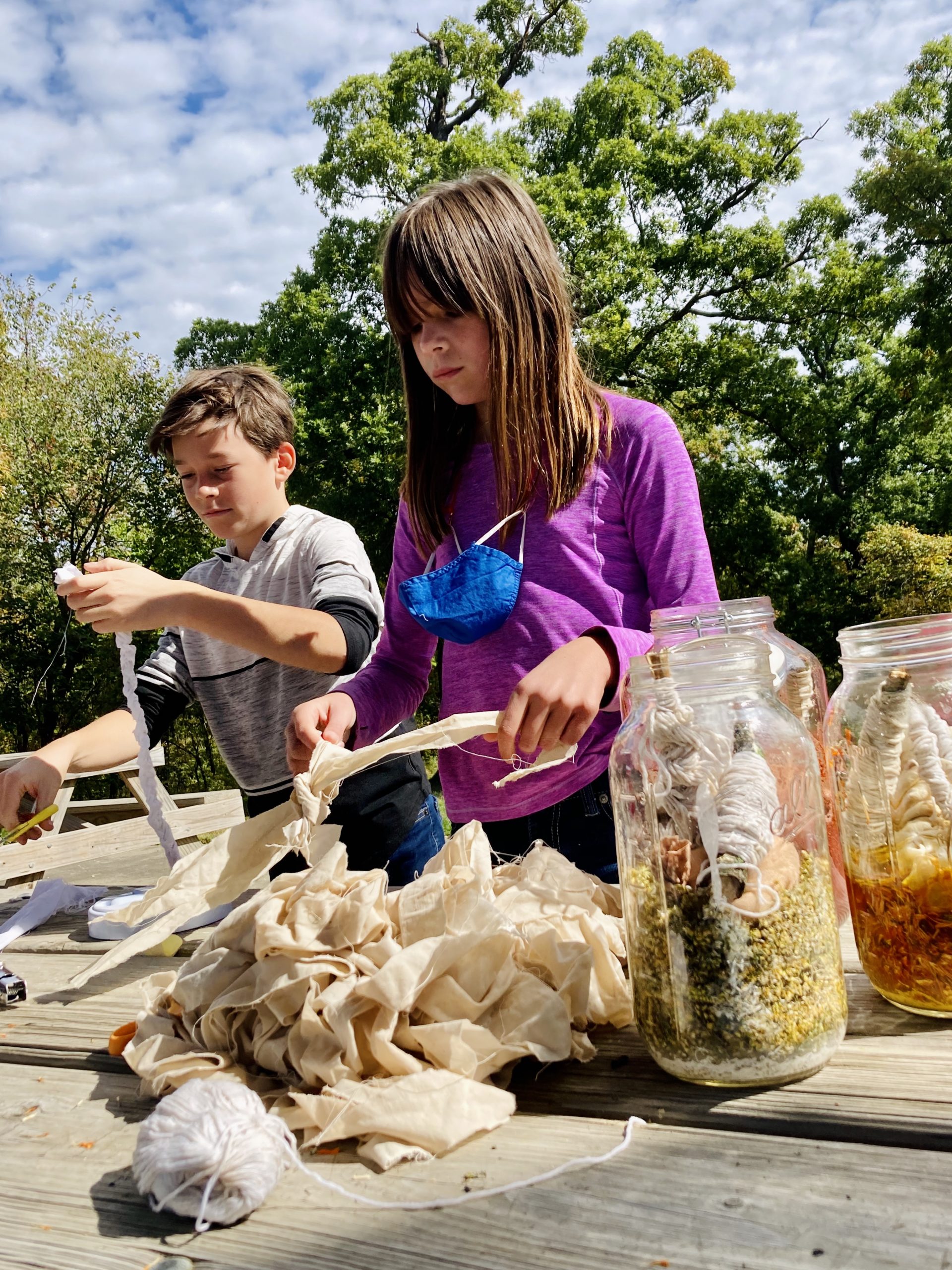October 11, 2020
Nature always wears the color of the spirit.
– Ralph Waldo Emerson
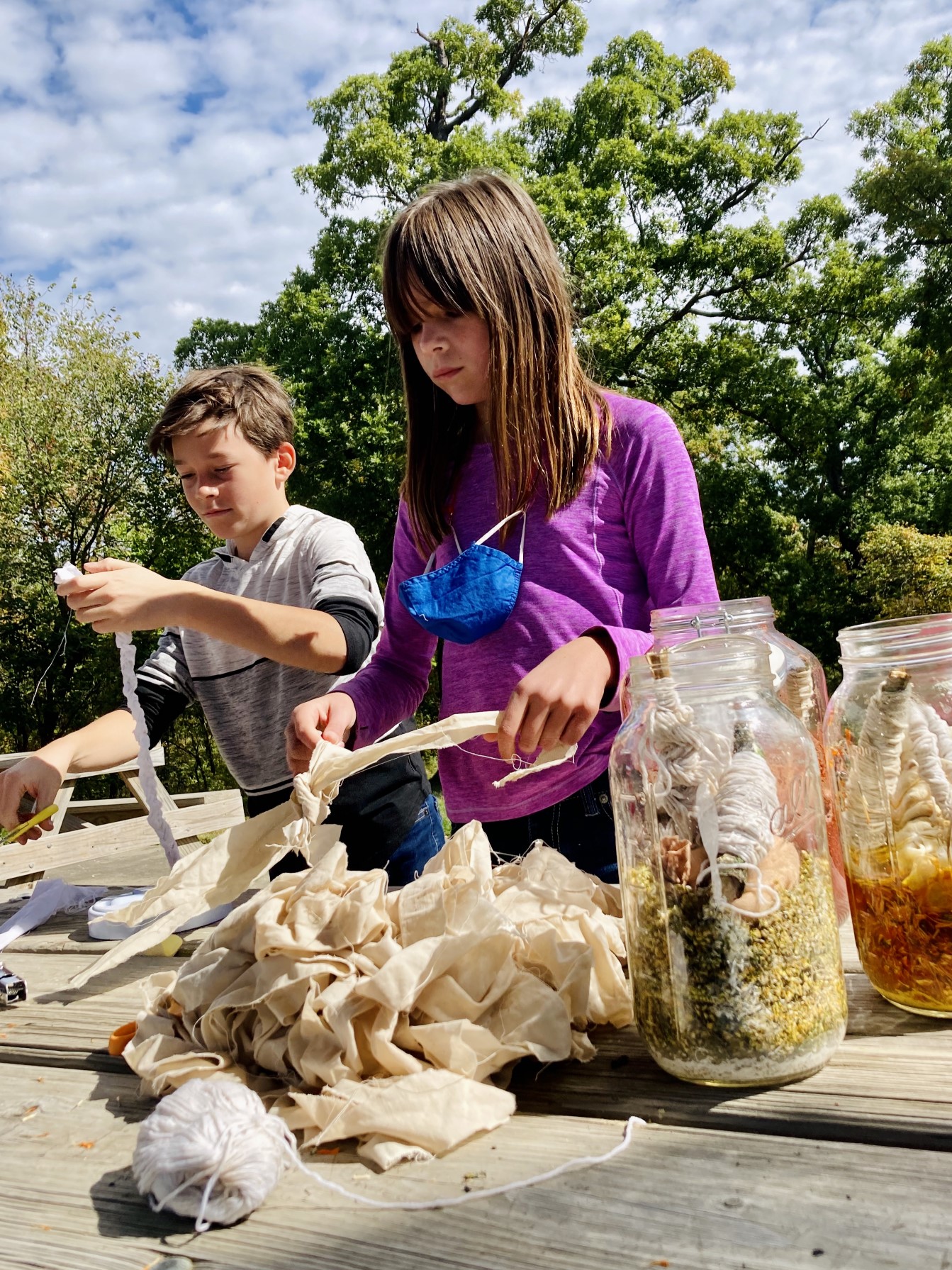
Every Friday, City of Fountains School in Kansas City, Missouri holds an Enrichment Day for grades-age children that attend the school or homeschool. This year I began teaching the upper grades class (which is currently 5-7th grade) and we are holding our program at a local nature reserve, The Lakeside Nature Center. It is truly a heart-centered and joyful experience of nature discovery and artistic activity. We follow a daily rhythm of hiking, learning about nature, creating and playing together.
I have centered the year’s explorations upon two themes: learning about trees and native plants, and artistic exploration of a variety of media. We started with the whole of the tree and gradually moved to focus on its parts, learning about the characteristics of wood, leaves, and seeds as it fits the season. We are drawing observations and beginning to make identifications of the trees based on leaves and seeds. We draw often- whole trees, collections of leaves, flowers, and seeds. We have decorated hiking sticks with basic yarn wrapping and weaving. We also created the leaf prints I shared last week, then drew quick, gestural sketches of leaves and created monoprints from them.
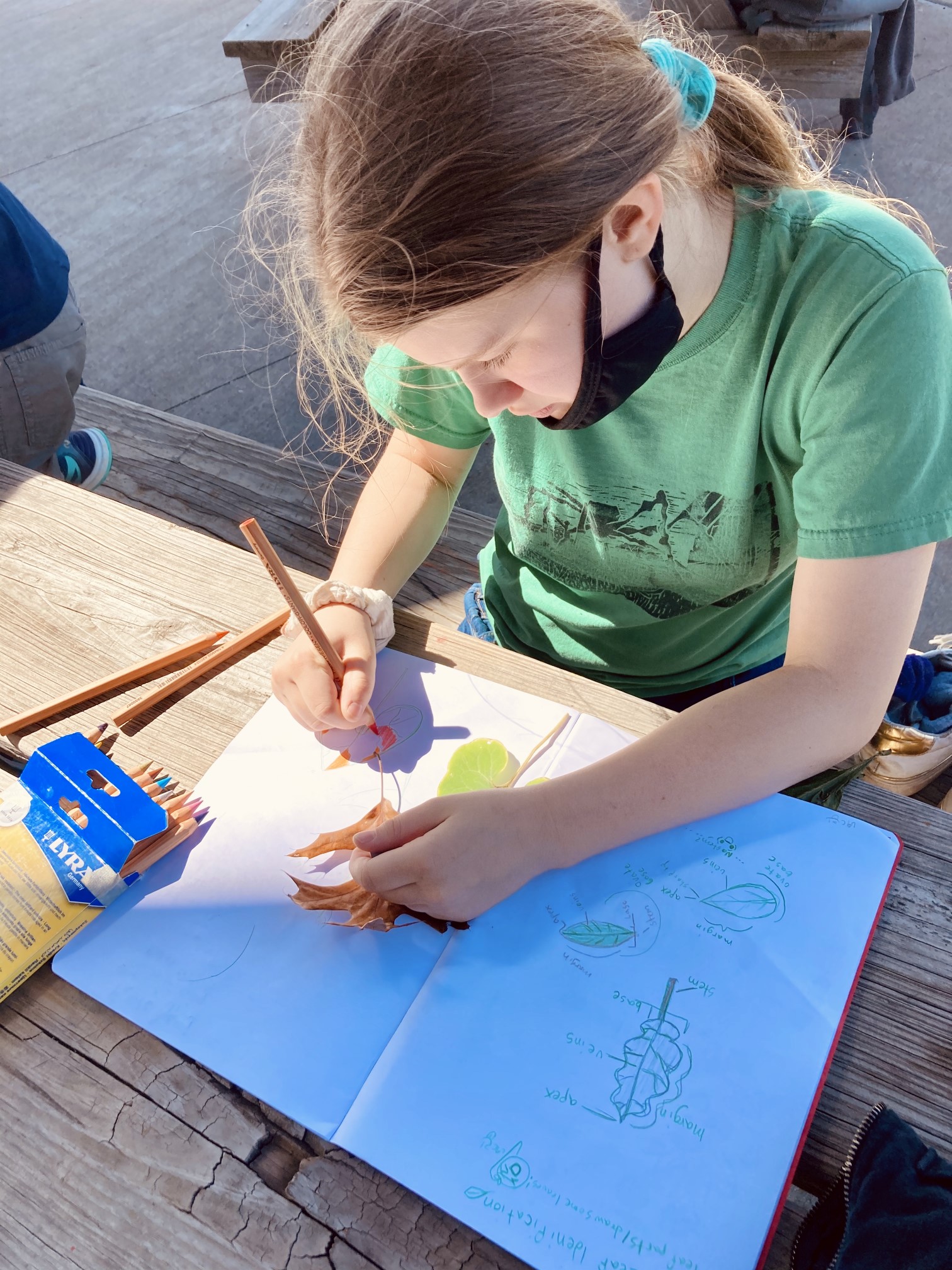
Often a-chatter as they scale rocks, hop on fallen trees, and forge off the beaten path, they have loved our hikes. Sometimes I hush their chatter and stop our movement so they can just be. I give them opportunities to observe the trees, or just a tree, and take it in quietly. I hope in these moments that the woods become magical to them.
Throughout these weeks I have briefly discussed some uses of native plants for medicines and dyes. We have been foraging goldenrod, acorns, marigold and walnuts from the woods, the roadsides, and our own backyards for a solar dyeing project that we started last Friday. I added some purchased madder root to widen our color pallet and give an example of a root-based dye. I applied a mordant to the fibers ahead of time and together we prepared them by winding yarn on sticks, tearing old cotton sheets into strips, and stuffing wool into old stockings. Even in this basic step their creative nature kicked in without my prompting. They chose to braid, wrap, twist and fold the strips in a variety of ways to experiment with the coloration results. We smashed up acorns and walnut husks, mixed flowers and roots to create our dyes. They especially loved the tearing and smashing!
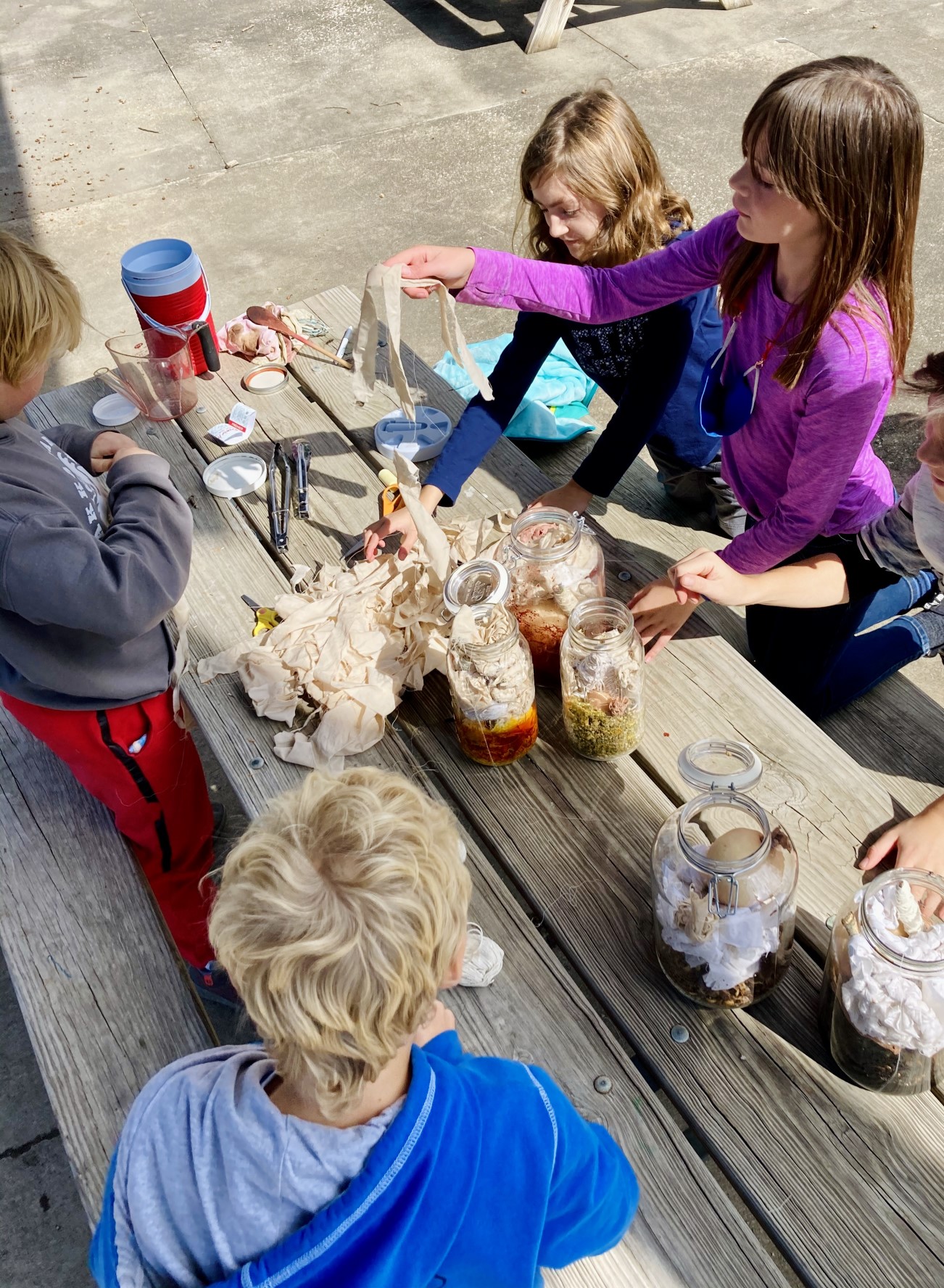
We added some calcium carbonate to a couple of the dye jars to alter the pH levels, and stuffed them full of fibers before topping them off with water. We have been blessed to have a very sunny week for our fibers to spend in their jars. We will reveal their colors in our upcoming class and use our fibers in future weaving projects.
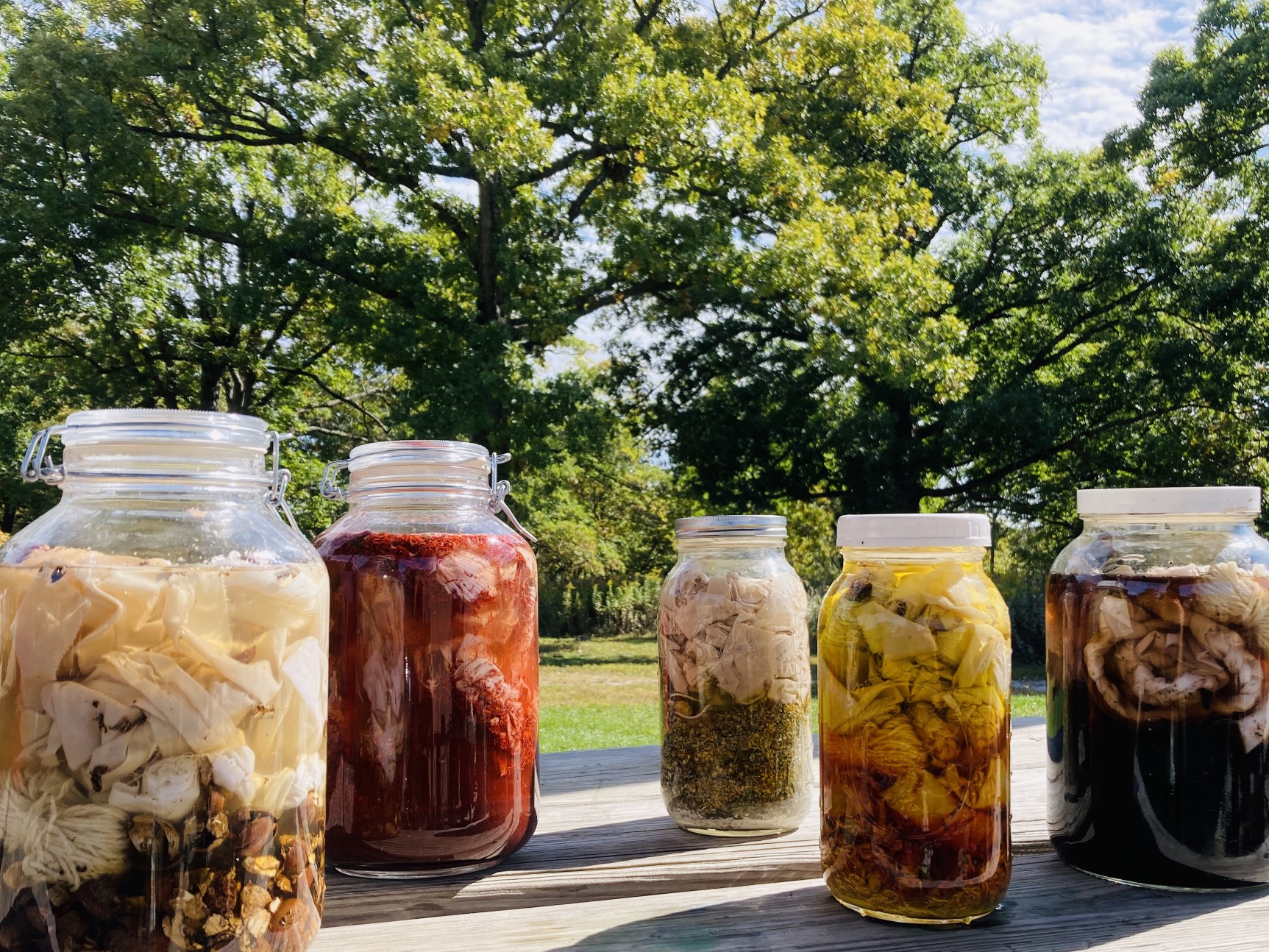
I particularly enjoy fabric dyeing with children because it’s process-based art and appropriate for many ages. I have dyed with children as young as three and as old as thirteen, each deriving an experience appropriate for their age. A young child immerses wondrously in the magical imprint of color on a previously neutral fiber. An active child appreciates the smashing, tearing, pouring and other movements. An older child wonders, too, at this marvel of color but grows fascinated with the process details. They may wish to pursue it further, to take hold of it to learn and make their own outlet of expression. I’m eager to see our color results this time and hear from my class children about what they will take from it.
Cheers,

